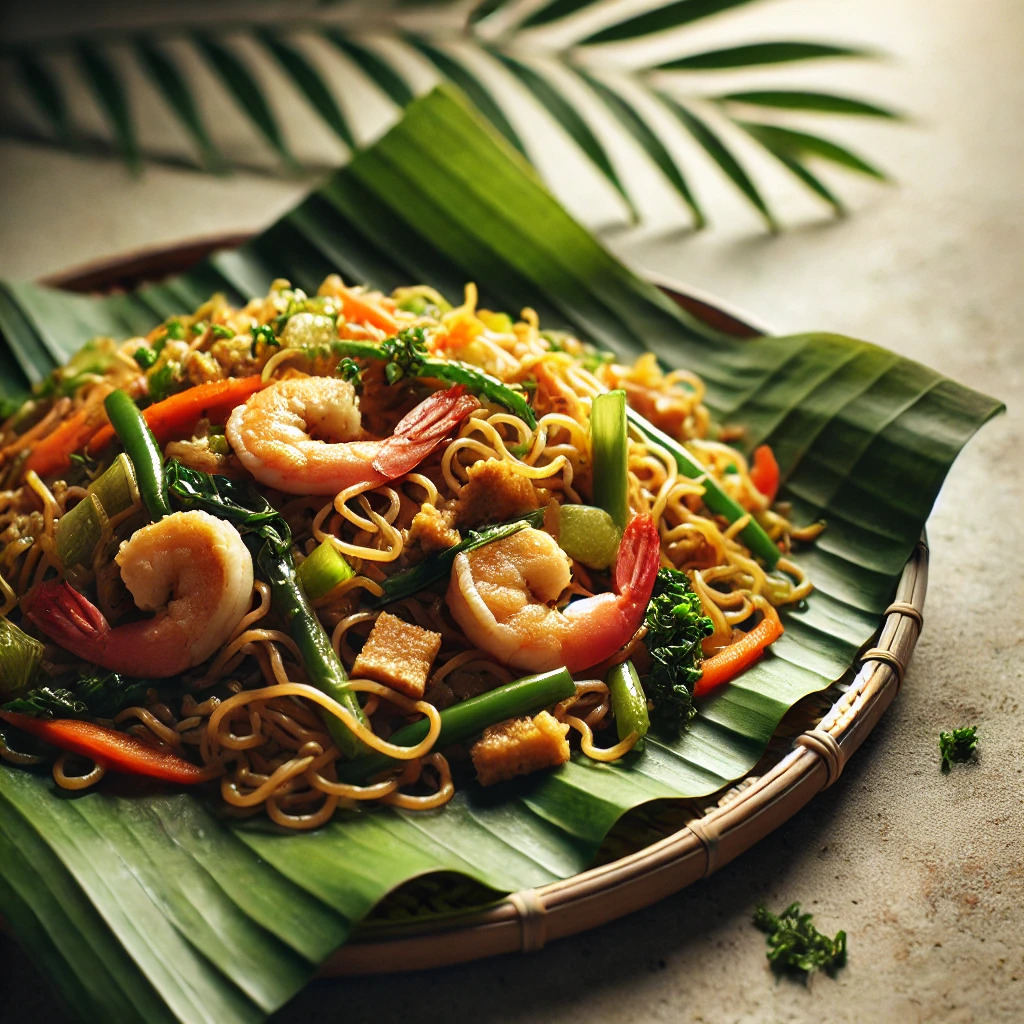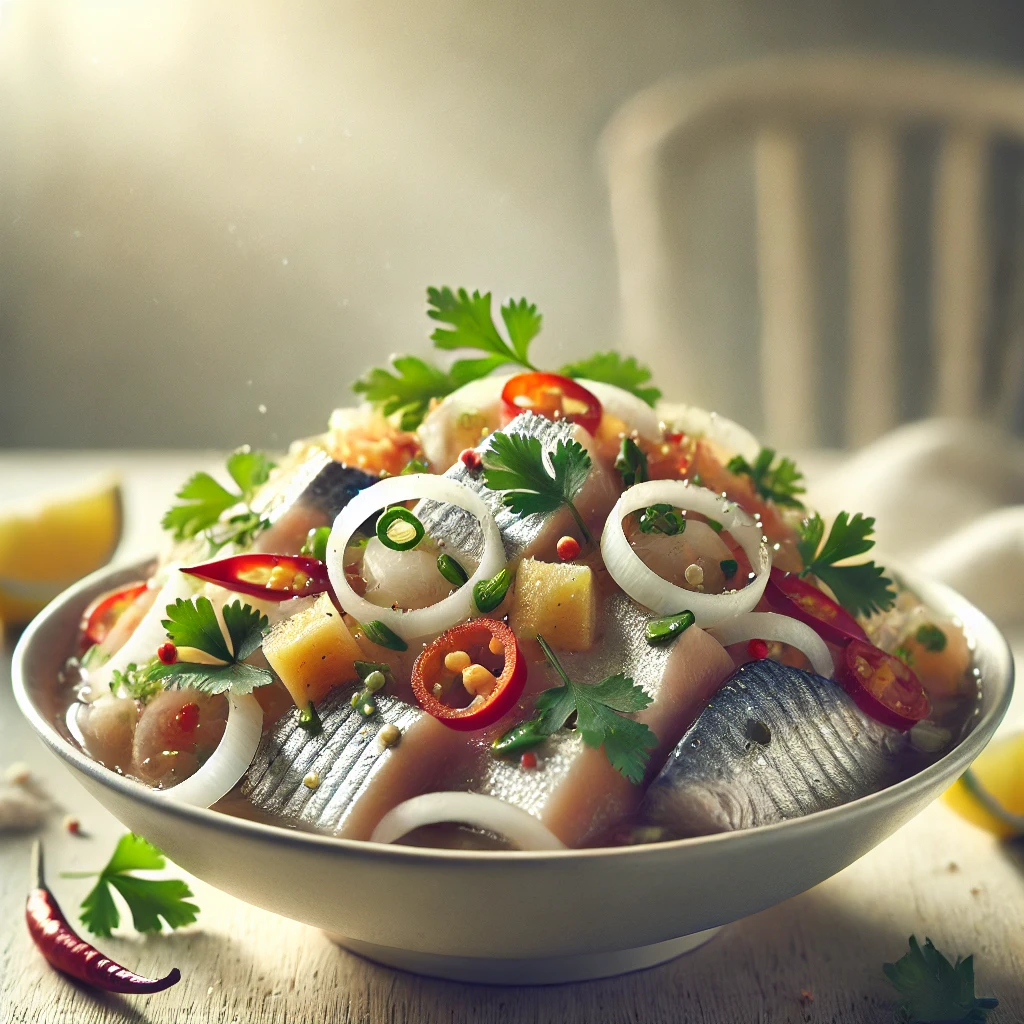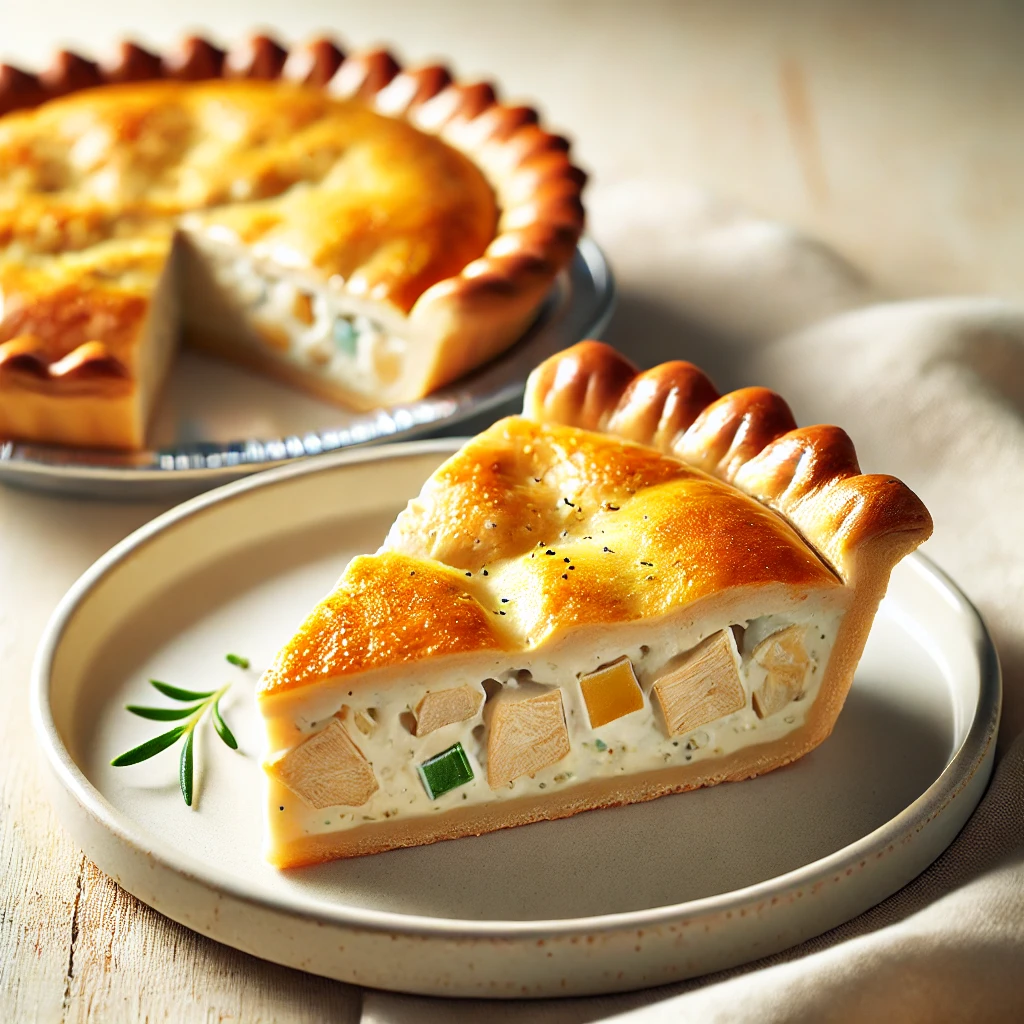Have you ever eaten noodles without utensils, slurping them directly from a banana leaf? If not, prepare to embark on a culinary adventure with Pancit Habhab, a beloved Filipino dish that’s as fun to eat as it is delicious. Hailing from the picturesque town of Lucban in Quezon Province, this unique noodle dish has captured the hearts and taste buds of locals and tourists alike. Imagine yourself sitting at a rustic table, surrounded by the vibrant atmosphere of a Filipino fiesta, as you’re presented with a steaming portion of Pancit Habhab served on a fresh banana leaf. The aroma of sautéed vegetables and perfectly seasoned noodles wafts through the air, enticing you to dig in – but wait! There’s no fork or spoon in sight. That’s because Pancit Habhab is traditionally eaten using only your hands and mouth, making it a truly immersive dining experience.
Pancit Habhab, also known as Pancit Lucban, is more than just a meal; it’s a celebration of Filipino culture and ingenuity. This dish showcases the resourcefulness of the people of Lucban, who created a portable and convenient way to enjoy noodles during busy harvest seasons or festive occasions. The name “Habhab” comes from the local term for the slurping action used to eat the noodles directly from the banana leaf. This unique serving method not only adds a fun element to the dining experience but also imparts a subtle, natural flavor to the dish.
For those with dietary concerns, Pancit Habhab can easily be adapted to suit various needs. While the traditional recipe includes pork and chicken, vegetarian versions can be made by omitting the meat and focusing on the vibrant mix of vegetables. Gluten-free diners can enjoy this dish by using rice noodles instead of the typical wheat-based ones. The versatility of Pancit Habhab makes it an inclusive dish that can be enjoyed by many, regardless of dietary restrictions.
As we dive into the recipe, prepare to discover the perfect balance of flavors and textures that make Pancit Habhab a true Filipino culinary gem. From the chewy noodles to the crisp vegetables and savory meat, each bite tells a story of tradition, innovation, and the joy of communal dining. So, roll up your sleeves, gather your ingredients, and get ready to bring a taste of Lucban’s festive spirit into your own kitchen!
Recipe Ingredients
Before we start cooking, let’s gather all the ingredients needed to create this mouthwatering Pancit Habhab. The following table lists everything you’ll need, along with measurements and potential substitutions:
| Ingredient | Quantity | Substitutions |
|---|---|---|
| Miki noodles (wheat noodles) | 500g | Rice noodles for gluten-free option |
| Pork belly | 200g, sliced | Chicken breast or tofu for a lighter version |
| Chicken breast | 200g, sliced | Extra pork or mushrooms for vegetarian option |
| Carrots | 2 medium, julienned | Squash or bell peppers |
| Cabbage | 1/4 head, shredded | Bok choy or Napa cabbage |
| Snap peas | 100g, trimmed | Green beans or snow peas |
| Garlic | 5 cloves, minced | Garlic powder (1 tsp) |
| Onion | 1 medium, sliced | Shallots or leeks |
| Soy sauce | 1/4 cup | Tamari for gluten-free option |
| Oyster sauce | 2 tbsp | Hoisin sauce or vegetarian oyster sauce |
| Calamansi or lemon juice | 2 tbsp | Lime juice |
| Chicken broth | 1 cup | Vegetable broth |
| Cooking oil | 3 tbsp | Any neutral cooking oil |
| Salt and pepper | To taste | – |
| Banana leaves | For serving | Large lettuce leaves |
| Green onions | For garnish | Chives or cilantro |
Recipe Instructions
Now that we have all our ingredients ready, let’s dive into the step-by-step process of creating your very own Pancit Habhab. Follow these instructions carefully, and you’ll be rewarded with a delicious and authentic Filipino dish that will transport you straight to the streets of Lucban.
- Prepare the noodles:
- Soak the miki noodles in room temperature water for about 10 minutes to soften them slightly.
- Drain the noodles and set them aside.
- Cook the meat:
- Heat 2 tablespoons of cooking oil in a large wok or deep skillet over medium-high heat.
- Add the sliced pork belly and cook until it starts to brown and render its fat, about 5 minutes.
- Add the sliced chicken breast and continue cooking for another 3-4 minutes until both meats are cooked through.
- Remove the meat from the wok and set aside, leaving any rendered fat in the pan.
- Sauté the aromatics:
- In the same wok, add the remaining tablespoon of oil if needed.
- Sauté the minced garlic and sliced onions until fragrant and the onions become translucent, about 2-3 minutes.
- Cook the vegetables:
- Add the julienned carrots to the wok and stir-fry for 2 minutes.
- Next, add the snap peas and cook for another minute.
- Finally, add the shredded cabbage and cook for an additional 2 minutes, or until the vegetables are crisp-tender.
- Combine and season:
- Return the cooked meat to the wok with the vegetables.
- Pour in the soy sauce, oyster sauce, and chicken broth. Stir to combine all ingredients.
- Add the drained miki noodles to the wok and gently toss everything together, ensuring the noodles are well-coated with the sauce.
- Cook for 3-5 minutes, stirring occasionally, until the noodles are tender and have absorbed most of the liquid.
- Final seasoning:
- Add the calamansi or lemon juice and stir to incorporate.
- Taste and adjust the seasoning with salt and pepper as needed.
- If the mixture seems too dry, you can add a bit more chicken broth or water.
- Serve:
- Prepare banana leaves by washing them thoroughly and passing them quickly over a flame to make them more pliable.
- Cut the banana leaves into squares or rectangles, about 8-10 inches in size.
- Place a portion of the Pancit Habhab on each banana leaf.
- Garnish with sliced green onions.
- Enjoy:
- Serve the Pancit Habhab immediately while it’s hot.
- Encourage your diners to eat in the traditional way – by lifting the banana leaf to their mouths and slurping the noodles directly from the leaf!
Recipe Tips & Variations
To ensure your Pancit Habhab is a success and to cater to different preferences, here are some helpful tips and variations:
Tips for Success:
- Noodle preparation: Be careful not to oversoak the miki noodles, as they will continue to cook in the wok. Slightly undercooked noodles will absorb the flavors better and prevent them from becoming mushy.
- Vegetable crispness: To maintain the vegetables’ crunch, avoid overcooking them. They should be bright in color and still have a slight bite when you serve the dish.
- Sauce consistency: The sauce should coat the noodles without being too soupy. If it’s too dry, add small amounts of broth until you reach the desired consistency.
- Banana leaf handling: If you’re having trouble making the banana leaves pliable, you can briefly steam them instead of passing them over a flame.
Variations:
- Seafood Pancit Habhab: Replace the pork and chicken with a mix of shrimp, squid, and mussels for a delicious seafood version.
- Vegetarian Pancit Habhab: Omit the meat and use tofu or mushrooms instead. Replace the chicken broth with vegetable broth and use vegetarian oyster sauce.
- Spicy Pancit Habhab: Add sliced bird’s eye chilies or a tablespoon of chili garlic sauce to give your dish a spicy kick.
- Egg Pancit Habhab: Top each serving with a fried egg for added richness and protein.
Storage Instructions:
Pancit Habhab is best enjoyed fresh, but if you have leftovers, store them in an airtight container in the refrigerator for up to 2 days. Reheat in a pan with a splash of water or broth to restore moisture. Avoid microwaving, as it can make the noodles soggy.
Nutritional Information
While Pancit Habhab is a delicious and satisfying meal, it’s also helpful to be aware of its nutritional content. The following table provides an estimated nutritional breakdown per serving (based on 6 servings from this recipe):
| Nutrient | Amount per Serving |
|---|---|
| Calories | 450 |
| Total Fat | 18g |
| Saturated Fat | 5g |
| Cholesterol | 45mg |
| Sodium | 780mg |
| Total Carbohydrates | 55g |
| Dietary Fiber | 4g |
| Sugar | 3g |
| Protein | 22g |
Please note that these values are approximate and may vary based on specific ingredients and portion sizes.
Conclusion
As the aroma of your homemade Pancit Habhab fills your kitchen, take a moment to appreciate the journey you’ve embarked upon. This isn’t just any noodle dish; it’s a portal to the vibrant streets of Lucban, where tradition and flavor intertwine to create a truly unique culinary experience. The act of eating Pancit Habhab – slurping noodles from a banana leaf with your hands – is a reminder of the joy and communal spirit that food can bring to our lives.
I’ll never forget the first time I tried Pancit Habhab during a trip to Quezon Province. The laughter and camaraderie around the table as everyone awkwardly (at first) attempted to eat without utensils quickly gave way to pure enjoyment of the delicious flavors and textures. It was a meal that engaged all the senses and left an indelible mark on my culinary memories.
Now it’s your turn to create your own Pancit Habhab story. Gather your friends and family, serve up your creation on banana leaves, and watch as smiles spread across faces with each savory bite. Don’t be afraid to get a little messy – it’s all part of the fun! And remember, the beauty of home cooking is in the sharing, so we’d love to hear about your Pancit Habhab adventure. Did you try any variations? How did your guests react to eating without utensils? Share your experiences and photos on social media or in the comments below.
For those whose appetites have been whetted by this taste of Filipino cuisine, why not explore more? The Philippines is a treasure trove of unique and delicious dishes waiting to be discovered. From the tangy Sinigang to the rich and creamy Kare-Kare, there’s a world of flavors to explore. Check out our other Filipino recipe blogs and embark on your next culinary adventure!
Thank you for joining us on this flavorful journey through Lucban’s famous Pancit Habhab. May your kitchen be filled with the aromatic spices of the Philippines, your table surrounded by loved ones, and your banana leaves always full of delicious noodles. Happy cooking, and don’t forget – slurp with gusto!
Disclaimer: This recipe blog post is based on information available up to 2019. While we strive for accuracy, culinary traditions and recipes may evolve over time. We encourage readers to explore current local sources for the most up-to-date information on traditional dishes. If you notice any inaccuracies, please report them so we can correct them promptly.




